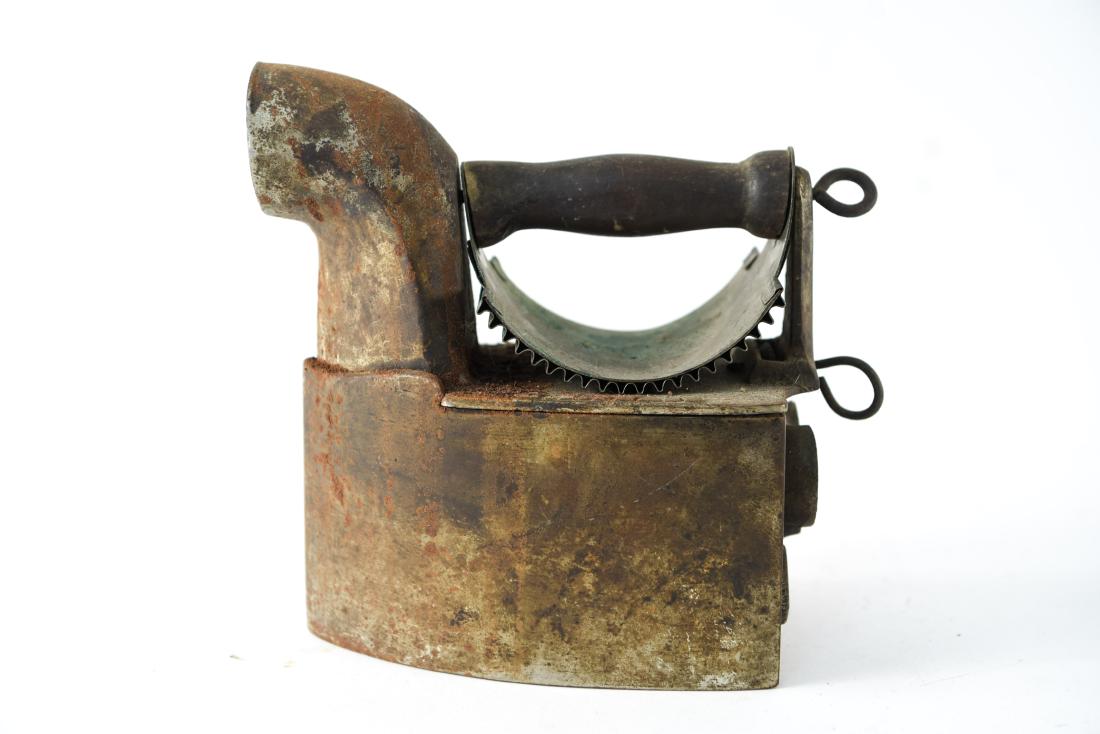
Jennifer Richardson wrote:So I found a couple of old iron smoothing irons upstairs (pictures below) and wondered if anyone had any experience using them. I'd like to get into sewing and quilting at some point, so I thought they might do for pressing seams (I don't currently iron, because I am a giant slob) but I don't want to get soot or grease all over my fabric or singe it.Īny advice on restoration, maintenance, and use would be appreciated!

The internet also tells me that cast iron trivets were generally used to rest them on while ironing, and that often one iron would be left heating while the other was being used, and then they'd switch out. I'd also like to experiment with my wood burning options, but the fireplace and rocket stove seem likely to result in sooty irons and ruined fabric. I'm thinking the cleanest and most convenient way would just be to heat them directly on the electric burner. We don't have a wood stove (alas), just an electric range & oven, a fireplace, and a small camping wood burning rocket stove to use outdoors. I'm also wondering about heating them up and keeping them that way. I saw that beeswax was used in the olden days to keep them from sticking to starched fabrics, but that seems to be a separate thing from the greasing they refer to. Cooking fats seem like a bad idea for something that'll be used on fabric.

Googling yielded the information that pre-electrification women were generally annoyed by the requirement to keep their irons lightly but regularly greased, but I'm not sure with what. Normally to restore old cast iron cookware I would polish them up with steel wool and season them, but I'm guessing I don't really want any seasoning on my iron! Simply use and care for them correctly to preserve their lifespan and beauty.So I found a couple of old iron smoothing irons upstairs (pictures below) and wondered if anyone had any experience using them. Vintage wooden handle iron presses are guaranteed to impress and survive the test of time, whether used to press clothing or as a decorative piece. While not in use, store the iron press in a dry, cold area.īefore storage, apply a small layer of oil or grease to the base to prevent corrosion.įinally, vintage iron is a one-of-a-kind and ageless piece of history that can bring character and utility to any home. It is also simple to care for a Vintage iron.Īfter each usage, wipe down the base with a moist cloth or sponge, being cautious not to burn yourself. They are adaptable and unusual additions to any house or garden since they may be reused into several intriguing and utilitarian products. Vintage irons are a classic and lovely home item, whether used for their intended use or repurposed for a DIY project. They make fantastic decorative components. Vintage iron has a particular rustic beauty that can add personality and interest to any setting. The base is heated over a stove or fire, and the wooden handle presses against the fabric to eliminate wrinkles.įor several reasons, a vintage iron may be favoured over a modern electric iron. It comprises a sturdy cast iron base and a wooden handle for pressing clothing or linens. On the other hand, this timeless piece of history has a charm and simplicity that has endured the test of time.Ī vintage iron or press is a type of domestic equipment that was popular before introducing electric irons.

The vintage wooden handle iron press is one such tool that may appear ancient at first look. It is easy to overlook the tools and appliances of yesteryear in today's fast-paced world of technology and automation.


 0 kommentar(er)
0 kommentar(er)
